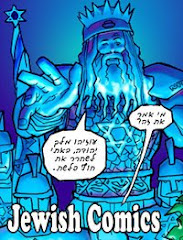Kleid, Neil and Jake Allen. Brownsville. NY : NBM ComicsLit, 2006. 207 p. $18.95 (ISBN 1-56163-458-1)
Rather than glamorize the lucrative lifestyle of the Jewish mafia of the 1930's or present the usual good-vs.-evil morality tale, Kleid delivers a more complex story in this graphic novel. The protagonist, Allie Tannenbaum, isn't a poor kid trying to escape poverty. His concerned father doesn't forbid him from joining Lepke's gang, but tries to emphasize to Allie how such choices are his to make --- and that they can be very costly.
In addition to the cast of fictional and real-life Jewish characters (such as Meyer Lansky, Dutch Schultz and Harry Strauss), there are Jewish references sprinkled throught the book : Yiddish phrases and terms thrown around, a mobster telling how Mendy Weiss doesn't kill on shabbos, a Star of David necklace used in arranging a surrendering to the authorities.
Allen's illustrations and pacing maintain the suspense and action, while Kleid's script blends fictional narrative with well-researched facts. A bibliography of novels, non-fiction, films and websites appers at the end, encouraging readers to learn even more about this forgotten dark chapter of Jewish history.
Though the violence in the book isn't gratuitous, it is present quite often, along with coarse language. I would reccommend this book for the Judaica graphic novel sections of public, synagogue and high school libraries.
Review: People Who Eat Darkness, by Richard Lloyd Parry
-
*People Who Eat Darkness: The True Story of a Young Woman Who Vanished from
the Streets of Tokyo- and the Evil that Swallowed Her Up*, by Richard Lloyd
...
3 years ago







